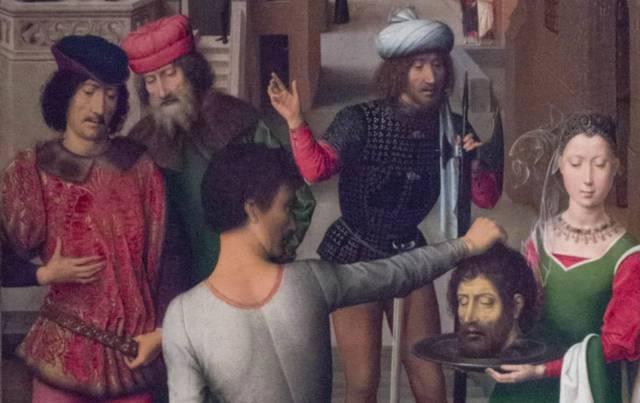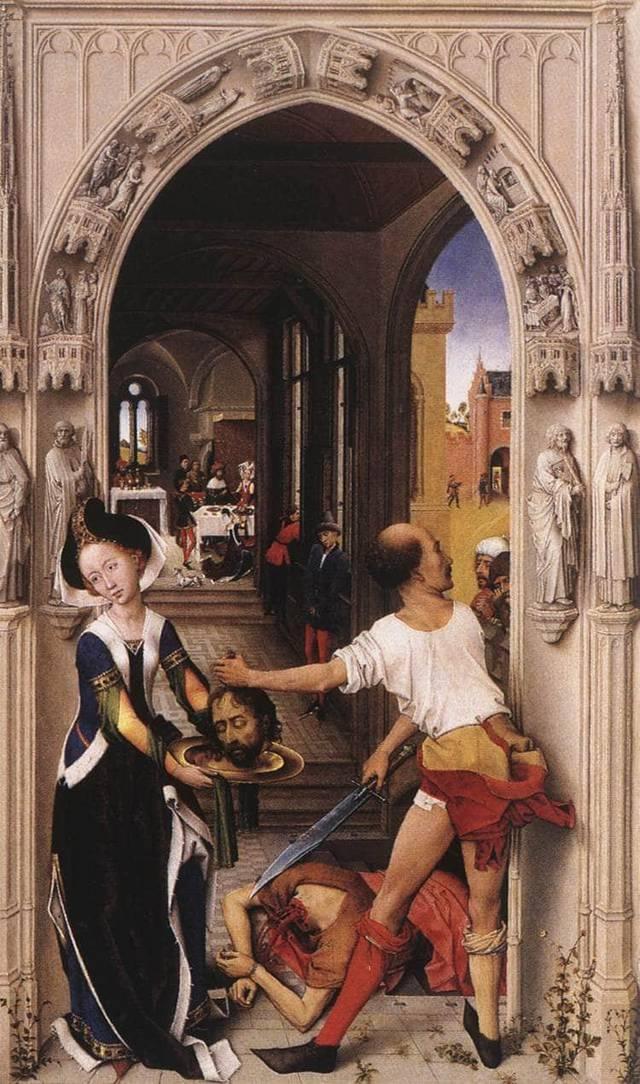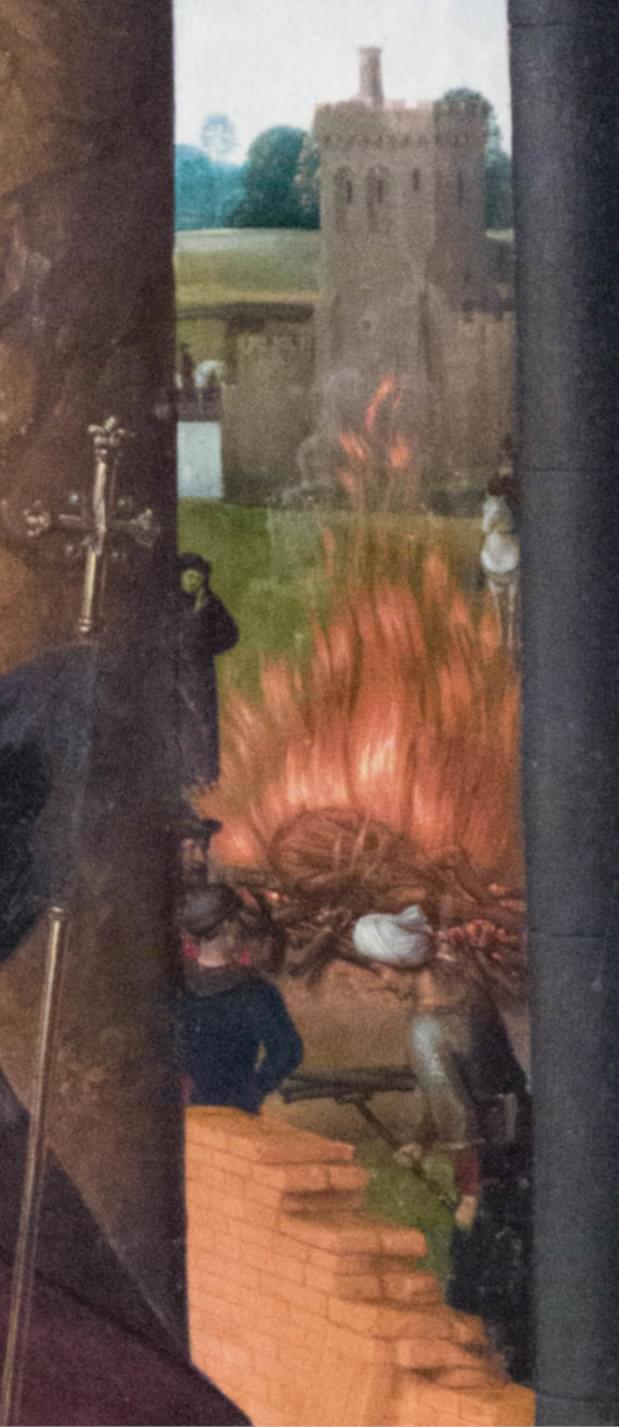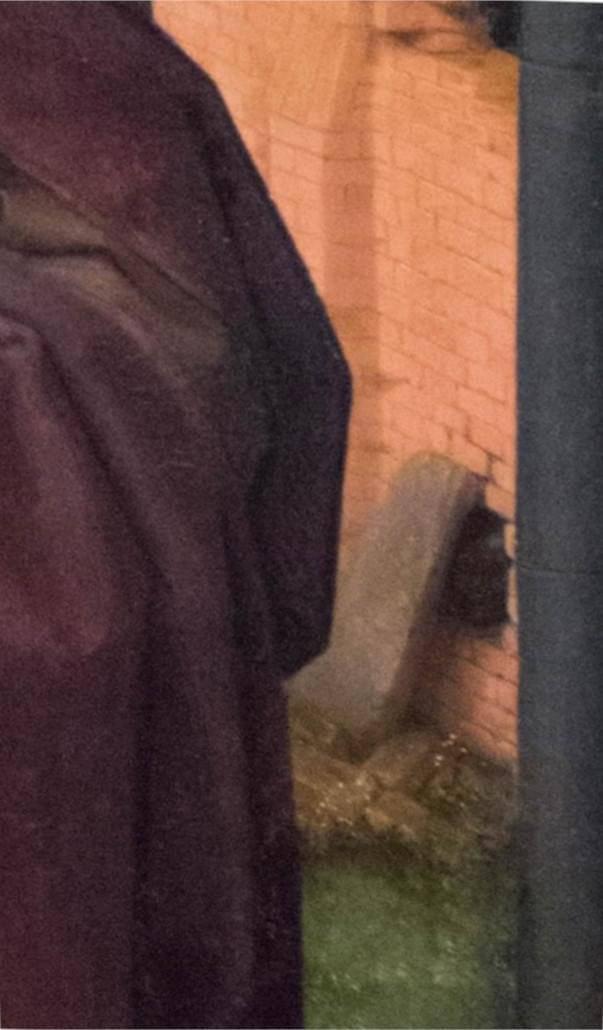Detail of the decollation of John the Baptist, inside left shutter
Memling has enlarged the scene in the foreground of the left shutter: we are in the inner courtyard of Herod's palace.
The execution site in the fortress is connected to the palace by a staircase in the background.

To the left of the executioner depicted from behind are the two disciples Andre and John the Apostle.
Memling's inspiration on Van Der Weyden for the scene of the beheading of John the Baptist, inside left shutter
The executioner is represented from behind placing the head in the plate presented to him by a barely moved Salome.
Art historians have identified in the positions of the executioner and Salome a reuse by Memling of a similar scene in a work by his master when he was the assistant of this painter in Brussels, Rogier VAN DER WEYDEN.
This is the left inner shutter of the Tryptic of St. John painted around - in the Painting Gallery of the Berlin State Museums (inventory reference: 534B).

Scene of the incineration of the body of John the Baptist in the background, inner central panel
Mark's narrative continues: When John's disciples heard this, they came and took up his corpse and laid it in a tomb
(Mark, chapter 6, verse 29).
According to tradition, this one was taken away from the territories controlled by Herod Antipas, to the West Bank in Sebastee, the actual village of Sebastia and buried with the prophets Elisha and Abdias.
On the left of the central panel, on the right, behind John the Baptist, Memling has made this last scene of his legend appear.
As his miracles kept occurring at John's burial site, to combat the nascent Christian faith, Roman Emperor Julian the Apostate ordered the body to be dug up, burned, and his ashes scattered across the fields.

Detail of the wall in which the head of John the Baptist is hidden, inner central panel
His head appears lower down in the opening of the wall, behind a stone.
But things do not go as planned.
According to legend, the head was buried separately by a potter from the city of Emesse, the present Homs in Syria, and then is thought to have appeared to Saint Marcellus who discovered it by following a star (The Golden Legend chapter 121, paragraph III.).

Thus ends the account of the legend of John the Baptist according to The Golden Legend.